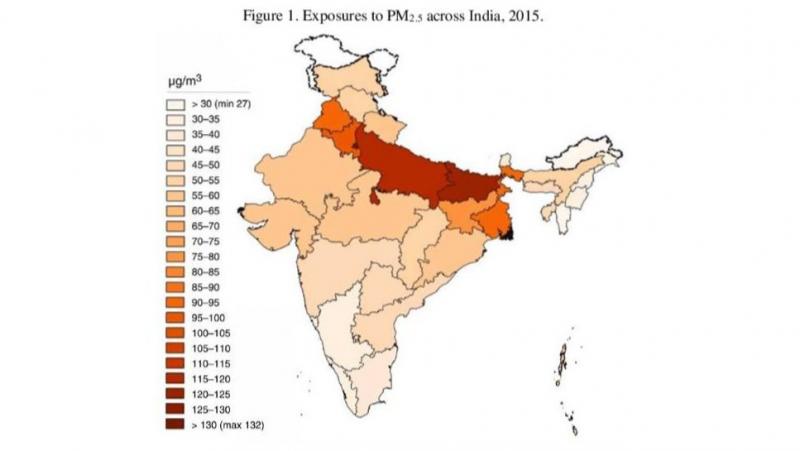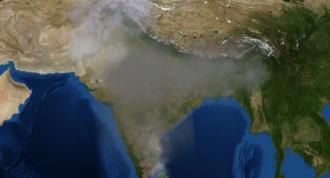
3.6 million lives could be lost in 2050 due to air pollution, says a recent study.
According to a new study by researchers from the Indian Institute of Technology-Bombay (IIT-B), the Health Effects Institute (HEI), and the Institute for Health Metrics and Evaluation (IHME), in 2015, only one in 1000 Indians lived in areas where particulate pollution did not exceed the permissible levels prescribed by World Health Organization (WHO).
The study, titled ‘Burden of Disease Attributable to Major Air Pollution Sources in India’ is the first comprehensive assessment on fine particulate matter (PM2.5) and their impacts on human health conducted in the country at the state and national level.
The study also found that in the same year, inhabitants of 21 Indian states and six union territories were exposed to PM2.5 levels higher than those deemed safe by the Indian annual standards. PM2.5 is a kind of air pollutant that consists of fine particles with a diameter of 2.5 microns or less. These particles can be detrimental to a person’s health, as their small size ensures that they escape the body’s mechanisms for protection against aerial pollutants, and settle in the respiratory system. Long term exposure to PM2.5 can lead to serious health complications.
The biggest culprit for air-pollution related health issues in India, in 2015, was found to be household biomass burning (23.9%) and coal combustion (15.3%), which contributed to around 268,000 and 169,000 deaths respectively. Emissions from agricultural burning, dust, transport, other diesels, and brick kilns also contributed to the burden of air pollution, which collectively contributed to 231,000 deaths in the country.
The study was greatly helped by enhanced satellite data and India’s growing network of air pollution monitors. It builds on the data collected by prior studies, which identified air pollution as the second highest public health risk factor, after malnutrition. Based on this data, the researchers evaluated future scenarios projecting to the year 2050 to identify the key challenges faced and to highlight possible mitigation measures.
“This systematic analysis of emissions from all sources and their impact on ambient air pollution exposure found significant contributions from regional sources (like residential biomass, agricultural residue burning and industrial coal), underlying that from local sources (like transportation and brick kilns)”, said Professor Chandra Venkataraman of IIT Bombay and one of the scientists involved in the study, in a press release. If no further measures are taken to reduce air pollution, 3.6 million lives could be lost in 2050, says the study.
To overcome these challenges, the researchers of this study recommend several actions that can be taken which could also reduce the number of human deaths by 2050. The use of LPG, piped gas and other alternative fuels could lead to the elimination of biomass use. A shift from using kerosene lamps to solar or electric sources of lighting would also significantly reduce the use of biomass. The authors recommend moving away from coal based power generation, and suggest that by 2050, 75%–80% of power generation has to be non-coal to reduce air pollution.
This study is one of the many that has sounded a warning death bell on air pollution in the country. But, are we listening?






